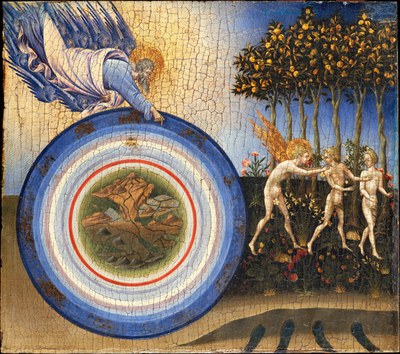Simone Westermann // The creation of time. Artistic reflections on temporality in late medieval and early modern Italy
Time only exists through its representation. As the physicist Carlo Rovelli (Rovelli 2017) has pointed out, there is no physical equation that can account for it and neither does it exist in absolute terms – in astrophysics, for example, time surprisingly does not play any decisive role. It does, however, more so in our everyday lives – it exists because it has been verbalized and visualized; more than anything, time is a product of human culture, of religion, literature and the visual arts.
This postdoc project concerns itself with the question of how time was thought of and visualized in the late Middle Ages. The thesis of this project is that during the 13th to 15th centuries, questions of time and temporality were being negotiated that were much more multi-layered and heterogenous than is usually acknowledged. The representation of time itself is a complex task for an artist. Visual arts – fresco, sculpture and painting on panel and canvas – are in their nature still. Showing movement and the passage of time therefore becomes something highly artful, something that goes beyond mimesis; in the act of showing movement, the artist enlivens her subjects, gives live to what was bound to be still. Early Modern art has been considered as embracing these strategies of enlivenment and of showing passages of time and vibrant movement (e.g. Fehrenbach, Felfe, Leonhard 2018; Bachtin 2008 [1986]). This project, however, poses the question of how time was reflected upon in the centuries leading up to the Early Modern, at a moment, when the first mechanical clocks were invented and objects of time quickly became omnipresent in society. How and why were time and its passage visualized then and what were the strategies employed by artists to reflect a notion of temporality?
Abbildungsnachweis: Giovanni di Paolo, The Creation of the World and the Expulsion from Paradise, Tempera and Gold on Wood, 46.4 x 52.1, 1445, Metropolitan Museum (© Metropolitan Museum - CC0 1.0)
